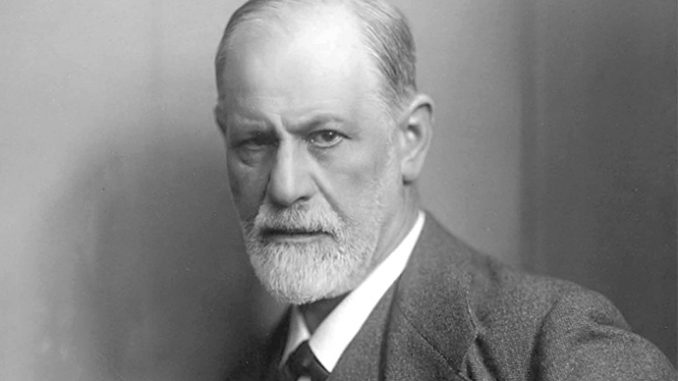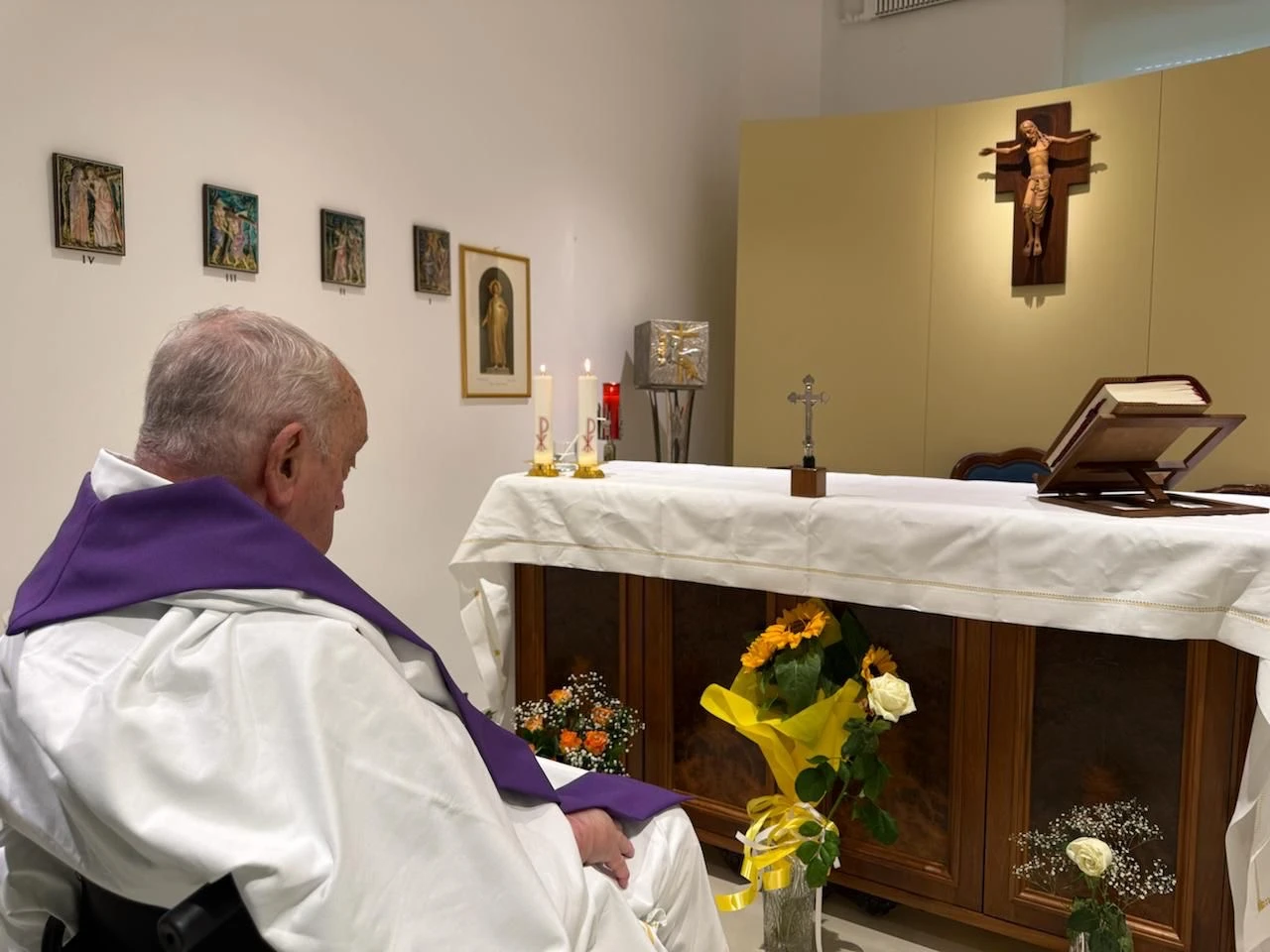Surveying the often tense relationship between Christianity and psychoanalysis
Detail from Max Halberstadt’s 1921 photographic portrait of Sigmund Freud. (Image: Wikipedia) In 2018, I took a sabbatical to write a book (about Christianity after Freud) that I had been carrying around in my head since the 1990s when, about...



In 2018, I took a sabbatical to write a book (about Christianity after Freud) that I had been carrying around in my head since the 1990s when, about to graduate from high-school, I could not figure out if I wanted to study theology for ordination, or psychology to pursue psychoanalytic training. In the end I pursued both.
I did not end up writing that book for two reasons: first, the Catholic sex abuse crisis was again raging, and I had published a number of essays about it, including some here at CWR. Perhaps now I should write a full book on that?
My ambivalence was swept away when the Spanish Jesuit Carlos Dominguez-Morano’s book Belief After Freud came into English translation on the first week of my sabbatical. I read it and at once saw that he wrote so powerfully, and on topics and with insights I would have taken a thousand years to treat as compellingly as he did, that I abandoned my proposal and instead wrote Everything Hidden Shall Be Revealed: Ridding the Church of Abuses of Sex and Power (Angelico, 2019).
There I drew extensively on Belief After Freud, and I would go on to draw grateful attention to his work, and that of other contemporary Jesuit psychoanalysts, elsewhere. Having found his book so powerful, I was of course immediately going to read anything else he wrote that came into English (many of his books in Spanish remain untranslated), and this year we have been graced with Sigmund Freud and Oskar Pfister on Religion: The Beginning of an Endless Dialogue.
There are two principal substantive virtues to this book and a third methodological one: the first is that it provides an up-to-date survey of the status quaestionis of psychoanalysis and Christianity. We have wanted such a book since Paul Roazen—the greatest historiographer of psychoanalysis until his death in 2005—first challenged intellectual historians to produce one a quarter-century ago.
The second is like unto it: the book includes a 75-page bibliography with almost 2000 items listed in a variety of languages (English, German, and all the Romance languages). In my earlier life working academically in theology, I developed an enormous respect, almost an awe, for Jesuit scholarship: books by Robert Taft, John O’Malley, Klaus Schatz, Michael Fahey and others (including the four discussed in the America article linked above) were marked not just by an eminent fair-mindedness, but above all by an astonishing comprehensiveness that—I used to joke—only a celibate would have time to produce! Those of us trying simultaneously to corral children and footnotes know how much gets missed in the process. (I must qualify my praise here by noting that the book clearly lacked comprehensive editing: there are innumerable misspellings as well as missing words, wonky formatting, and other solecisms throughout.)
The third virtue here has to do with Dominguez-Morano’s method: he is against what he calls the “concordist temptation.” In this I found myself mildly, but rightly, rebuked. My own approach to the question of how psychoanalytic and Christian thought intersect has been defensive and apologetic, and as a result my method for the book I have not (yet?) written was always going to be concordist: actually, these two, when properly understood, get along splendidly! All you Christians hating on Freud, and all you clinicians disdaining religion, really don’t know what you’re talking about!
And yet that is simply not true. Dominguez-Morano rightly reminds us that there is enough disdain, latent and manifest, in the clinical world for religious faith that one cannot simply magic it away. And there is enough suspicion in the religious world of psychotherapy that I regularly have to reassure Catholics that good good psychotherapy is not dangerous to their faith.
One can track both—suspicion and support—by the simple expedient of reading papal statements from Pius XI to Francis: under Pius XI, XII, and John XXIII there is reluctance to engage psychoanalytic therapy and palpably anxious suspicion of it; this shifts to cautious consideration of its possible uses under Paul VI; and then to an open embrace under John Paul II (who invited the psychoanalyst Erich Fromm to the Vatican in 1979); and finally to an even more open—almost startling—admission by Francis that he was himself in therapy with a Jewish psychoanalyst in Argentina.
This interconnected theme of suspicion-and-support is best captured in the deep, warm, frank friendship between Freud and Oskar Pfister, given fresh attention (after a 60-year gap in the literature) in Morano’s book, which undertakes a close reading of the relationship and its very considerable literature. Additionally it has a chapter on post-Freudian treatments, including those undertaken by the Catholic psychiatrist Ana-Maria Rizzuto of Boston, whose landmark books The Birth of the Living God and Why Did Freud Reject God? are unjustly neglected minor classics.
Freud (living in the very Catholic but also very anti-Semitic Habsburg Empire) described himself as a “godless Jew” while Pfister was a Christian pastor in Switzerland. Both became fast friends and remained extremely close for three decades with Pfister, also very beloved by Freud’s six children and wife Martha. In 1927, when Freud published his screed on religion Future of an Illusion, Pfister followed up almost immediately by publishing a blunt rejoinder titled The Illusion of a Future. Dominguez-Morano examines both books carefully and draws out overlooked parts of each, paying special attention to the many occasions when Pfister took Freud to task while also calling him the best friend religion ever had, suggesting Freud’s aims were the same as his fellow Jew Jesus of Nazareth: “the truth shall set you free.”
These details of their friendship are not insignificant when one considers how often Freud has been accused of an adamantine dogmatism of his own, and an intolerance for dissent that leads him to “excommunicate” followers. In all the correspondence I’ve read (Freud-Jones, Freud-Ferenczi, Freud-Jung, Freud-Pfister, and many others) nobody is allowed to be simultaneously as close to and as sharply, almost sarcastically, challenging of Freud as Pfister, and Morano brings out those details almost with glee.
For Freud, being set free meant rejecting not the truth-claims of religion (he ignored those in Future of an Illusion) but its role as a provider of infantilizing comfort in a capricious and often cruel world. Pfister thought this a minor danger for some, but that most outgrow such behaviors by discovering that there is a way of being both spiritually dependent on God and autonomous (what the Canadian psychiatrist Emmanuel Ghent would more recently describe as the difference between submission and surrender: the former is immature and masochistic and reduces one’s freedom, while the latter is an act of mature and increasing freedom).
Indeed, having trained in it himself, Pfister stoutly insisted—sometimes to Freud’s amazement at his friend’s great zeal—that psychoanalysis was to be welcomed precisely as a tool to help believers be more mature, more self-regulated in their emotional lives, and more able to free themselves from the various idols and illusions we all construct.
In the end, more than 80 years after Freud’s death and more than 60 after Pfister’s, Morano says the dialogue must continue because the search for truth and freedom is an endless quest, and at their best both psychoanalysis and theology teach us abstinence from some final formulation that then becomes ideology bled of all mystery (cf. Fides et Ratio, nos. 13-14). As both seek to understand the mystery of the human psyche (that is—as the Greek makes clear—soul, a word Freud used all the time but his English translators tendentiously replaced with mind, a terrible mistake Bruno Bettelheim documented in his invaluable book Freud and Man’s Soul) they are at one with each other.
But then what? After mutual understanding comes a divergence. Morano, faithful son of St. Ignatius of Loyola, recognizes that Christian faith, unlike psychoanalysis, is supererogatory, insisting we travel the “royal road” to service of others ad maiorem Dei gloriam. In the end, faith alone enables us to be, as Charles Wesley wrote, “lost in wonder, love, and praise”.
Sigmund Freud and Oskar Pfister on Religion: the Beginning of an Endless Dialogue
By Carlos Dominguez-Morano; translated by Francisco Javier Montero
Routledge, 2023
Hardover/softcover, x+234 pages
If you value the news and views Catholic World Report provides, please consider donating to support our efforts. Your contribution will help us continue to make CWR available to all readers worldwide for free, without a subscription. Thank you for your generosity!
Click here for more information on donating to CWR. Click here to sign up for our newsletter.















